A general non-self response as part of plant immunity
- PMID: 34007033
- PMCID: PMC7610825
- DOI: 10.1038/s41477-021-00913-1
A general non-self response as part of plant immunity
Abstract
Plants, like other multicellular lifeforms, are colonized by microorganisms. How plants respond to their microbiota is currently not well understood. We used a phylogenetically diverse set of 39 endogenous bacterial strains from Arabidopsis thaliana leaves to assess host transcriptional and metabolic adaptations to bacterial encounters. We identified a molecular response, which we termed the general non-self response (GNSR) that involves the expression of a core set of 24 genes. The GNSR genes are not only consistently induced by the presence of most strains, they also comprise the most differentially regulated genes across treatments and are predictive of a hierarchical transcriptional reprogramming beyond the GNSR. Using a complementary untargeted metabolomics approach we link the GNSR to the tryptophan-derived secondary metabolism, highlighting the importance of small molecules in plant-microbe interactions. We demonstrate that several of the GNSR genes are required for resistance against the bacterial pathogen Pseudomonas syringae. Our results suggest that the GNSR constitutes a defence adaptation strategy that is consistently elicited by diverse strains from various phyla, contributes to host protection and involves secondary metabolism.
Conflict of interest statement
The authors declare no competing interests.
Figures
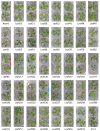
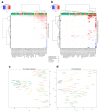

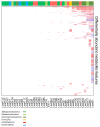







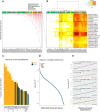
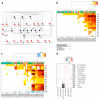

Comment in
-
Different threats, same response.Nat Plants. 2021 May;7(5):544-545. doi: 10.1038/s41477-021-00915-z. Nat Plants. 2021. PMID: 34007034 No abstract available.
Similar articles
-
Plant microbiota feedbacks through dose-responsive expression of general non-self response genes.Nat Plants. 2025 Jan;11(1):74-89. doi: 10.1038/s41477-024-01856-z. Epub 2024 Dec 3. Nat Plants. 2025. PMID: 39627368 Free PMC article.
-
Albugo-imposed changes to tryptophan-derived antimicrobial metabolite biosynthesis may contribute to suppression of non-host resistance to Phytophthora infestans in Arabidopsis thaliana.BMC Biol. 2017 Mar 20;15(1):20. doi: 10.1186/s12915-017-0360-z. BMC Biol. 2017. PMID: 28320402 Free PMC article.
-
Coordination of microbe-host homeostasis by crosstalk with plant innate immunity.Nat Plants. 2021 Jun;7(6):814-825. doi: 10.1038/s41477-021-00920-2. Epub 2021 May 24. Nat Plants. 2021. PMID: 34031541 Free PMC article.
-
The roles of ABA in plant-pathogen interactions.J Plant Res. 2011 Jul;124(4):489-99. doi: 10.1007/s10265-011-0409-y. Epub 2011 Mar 5. J Plant Res. 2011. PMID: 21380629 Review.
-
Contribution of small RNA pathway components in plant immunity.Mol Plant Microbe Interact. 2013 Jun;26(6):617-25. doi: 10.1094/MPMI-10-12-0255-IA. Mol Plant Microbe Interact. 2013. PMID: 23489060 Free PMC article. Review.
Cited by
-
Host genotype controls ecological change in the leaf fungal microbiome.PLoS Biol. 2022 Aug 11;20(8):e3001681. doi: 10.1371/journal.pbio.3001681. eCollection 2022 Aug. PLoS Biol. 2022. PMID: 35951523 Free PMC article.
-
Insect eggs trigger systemic acquired resistance against a fungal and an oomycete pathogen.New Phytol. 2021 Dec;232(6):2491-2505. doi: 10.1111/nph.17732. Epub 2021 Sep 25. New Phytol. 2021. PMID: 34510462 Free PMC article.
-
Comparative single-nucleus RNA-seq analysis revealed localized and cell type-specific pathways governing root-microbiome interactions.Nat Commun. 2025 Apr 3;16(1):3169. doi: 10.1038/s41467-025-58395-0. Nat Commun. 2025. PMID: 40175371 Free PMC article.
-
Endophytic commensal bacteria capitalize on the AvrPto-FER pathway to enhance proliferation during early stages of pathogen invasion.ISME J. 2025 Jan 2;19(1):wraf145. doi: 10.1093/ismejo/wraf145. ISME J. 2025. PMID: 40632106 Free PMC article.
-
Phyllosphere Microbiome in Plant Health and Disease.Plants (Basel). 2023 Oct 5;12(19):3481. doi: 10.3390/plants12193481. Plants (Basel). 2023. PMID: 37836221 Free PMC article. Review.
References
-
- Vorholt JA. Microbial life in the phyllosphere. Nat Rev Microbiol. 2012;10:828–840. - PubMed
-
- Müller DB, Vogel C, Bai Y, Vorholt JA. The plant microbiota: systems-level insights and perspectives. Annu Rev Genet. 2016;50:211–234. - PubMed
-
- Hacquard S, Spaepen S, Garrido-Oter R, Schulze-Lefert P. Interplay between innate immunity and the plant microbiota. Annu Rev Phytopathol. 2017;55:565–589. - PubMed
-
- Ditt RF, et al. The Arabidopsis thaliana transcriptome in response to Agrobacterium tumefaciens . Mol Plant Microbe Interact. 2006;19:665–681. - PubMed
MeSH terms
Substances
Grants and funding
LinkOut - more resources
Full Text Sources
Other Literature Sources
Molecular Biology Databases

